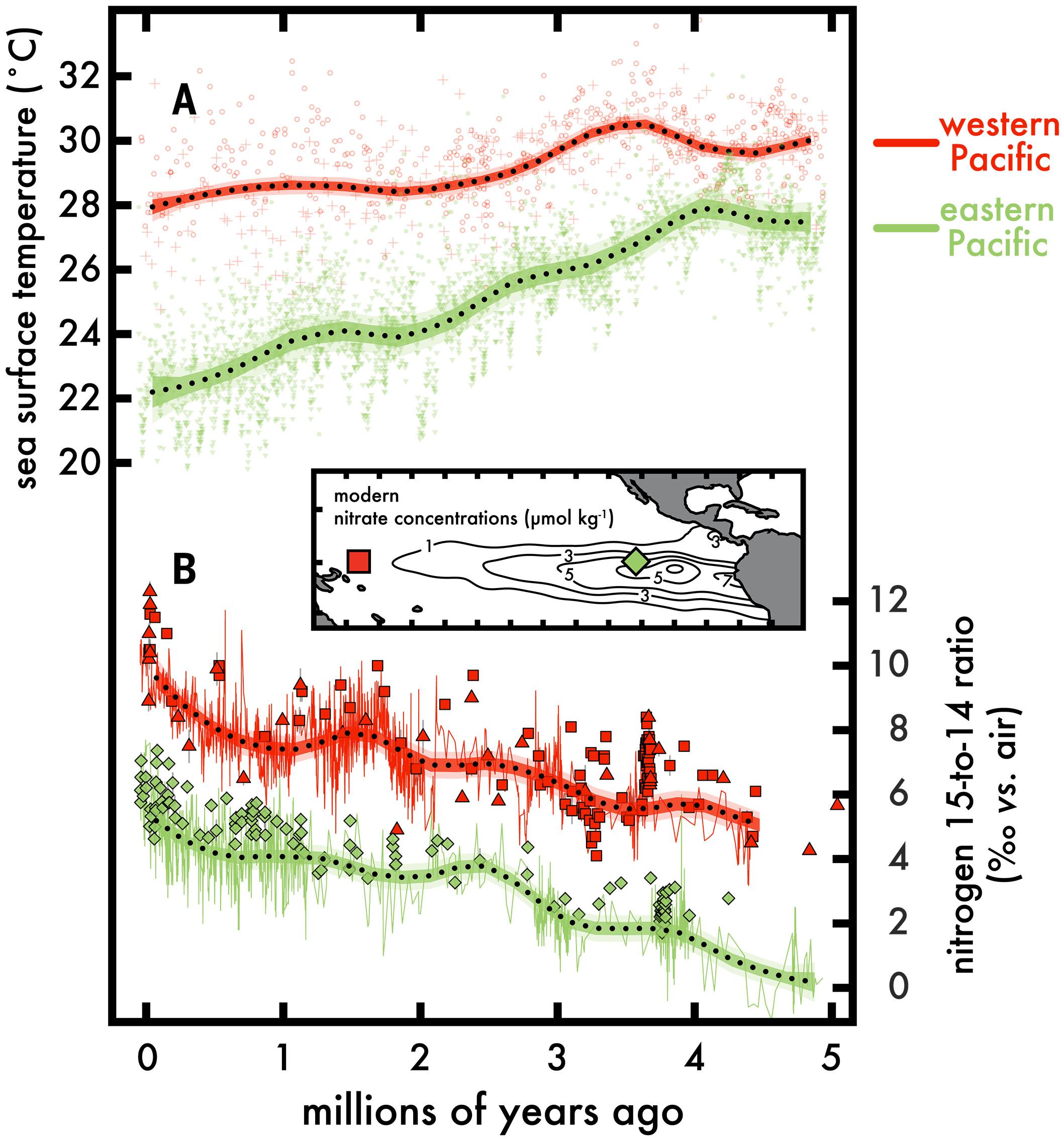上新世以来赤道东太平洋持续上升流
IF 45.8
1区 综合性期刊
Q1 MULTIDISCIPLINARY SCIENCES
引用次数: 0
摘要
上升流在东赤道太平洋(EEP)形成了一个营养丰富的“冷舌”,对全球气候、海洋生物生产力和碳循环产生影响。上新世期间冷舌减少,这一特征归因于上升流减弱和与之相关的东洋极带表层混合层加深。在这里,我们报告了氮同位素证据,表明类似现代的上升流在上新世期间发生在EEP中,并持续了500万年。我们将上新世冷舌的缩小解释为热带太平洋表层和地下水温差缩小的一种表现。尽管在上新世变暖下信风预期减弱,但垂直密度梯度的减小可能维持了EEP上升流。本文章由计算机程序翻译,如有差异,请以英文原文为准。

Persistent eastern equatorial Pacific Ocean upwelling since the warm Pliocene
Upwelling generates a nutrient-rich “cold tongue” in the eastern equatorial Pacific Ocean (EEP), with impacts on global climate, oceanic biological productivity, and the carbon cycle. The cold tongue was reduced during the Pliocene Epoch, a feature attributed to weaker upwelling and an associated deepening of the surface mixed layer in the EEP. Here, we report nitrogen-isotope evidence that modern-like upwelling occurred in the EEP during the Pliocene and has persisted over the past 5 million years. We explain the reduced Pliocene cold tongue as an expression of the reduced temperature difference between surface and subsurface waters in the tropical Pacific. The attendant reduction in the vertical density gradient may have maintained EEP upwelling despite the expected slackening of the trade winds under Pliocene warmth.
求助全文
通过发布文献求助,成功后即可免费获取论文全文。
去求助
来源期刊

Science
综合性期刊-综合性期刊
CiteScore
61.10
自引率
0.90%
发文量
0
审稿时长
2.1 months
期刊介绍:
Science is a leading outlet for scientific news, commentary, and cutting-edge research. Through its print and online incarnations, Science reaches an estimated worldwide readership of more than one million. Science’s authorship is global too, and its articles consistently rank among the world's most cited research.
Science serves as a forum for discussion of important issues related to the advancement of science by publishing material on which a consensus has been reached as well as including the presentation of minority or conflicting points of view. Accordingly, all articles published in Science—including editorials, news and comment, and book reviews—are signed and reflect the individual views of the authors and not official points of view adopted by AAAS or the institutions with which the authors are affiliated.
Science seeks to publish those papers that are most influential in their fields or across fields and that will significantly advance scientific understanding. Selected papers should present novel and broadly important data, syntheses, or concepts. They should merit recognition by the wider scientific community and general public provided by publication in Science, beyond that provided by specialty journals. Science welcomes submissions from all fields of science and from any source. The editors are committed to the prompt evaluation and publication of submitted papers while upholding high standards that support reproducibility of published research. Science is published weekly; selected papers are published online ahead of print.
 求助内容:
求助内容: 应助结果提醒方式:
应助结果提醒方式:


